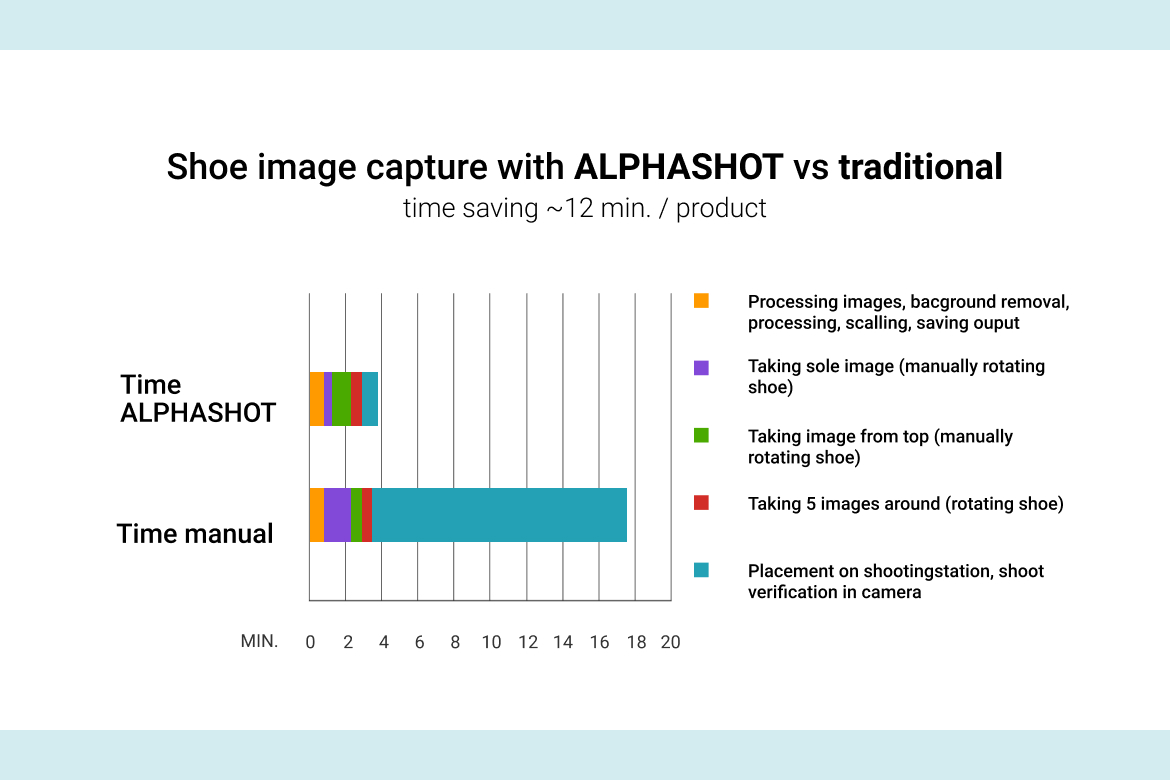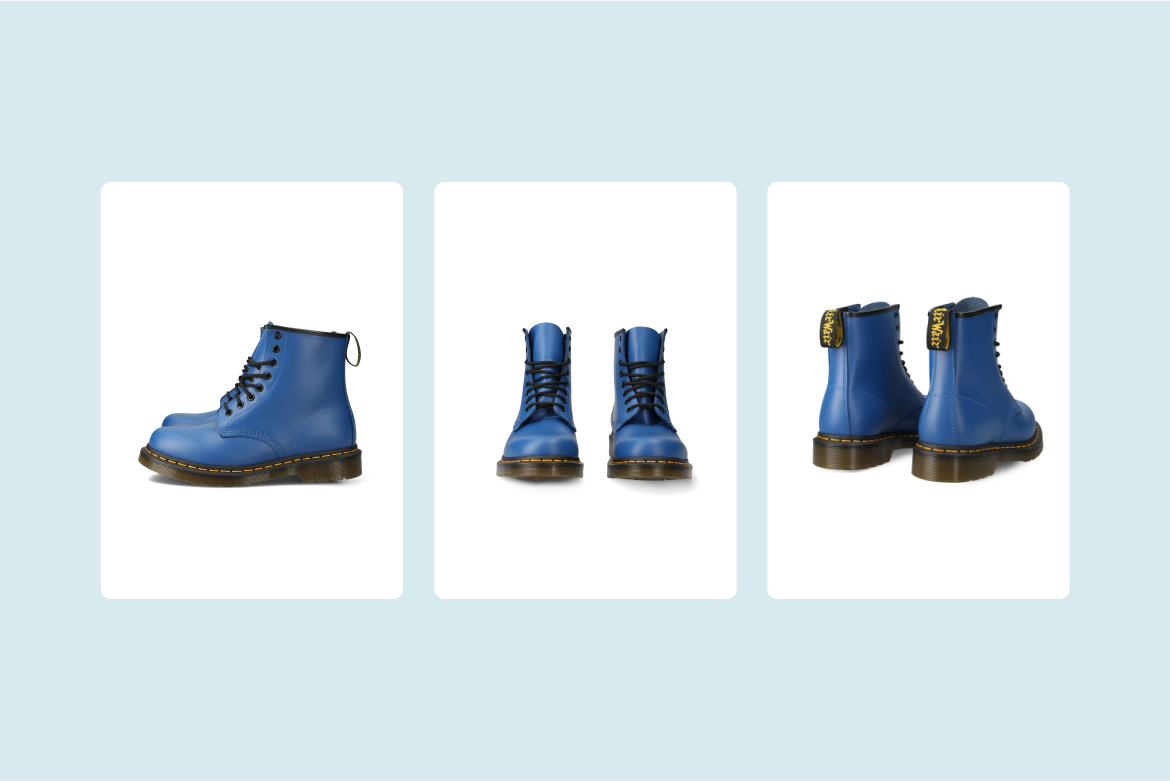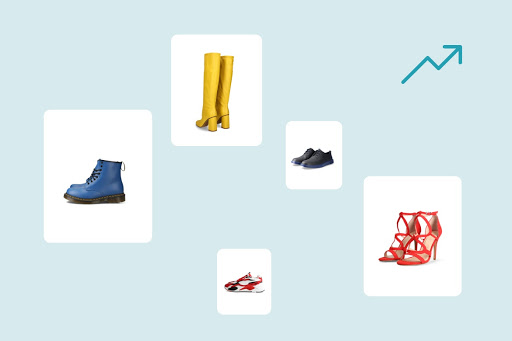5 ways automation in product photography can change your business
Written by
Editorial TeamPublished on

The growing e-commerce sector relies heavily on visual content. Accurate descriptions and attractive product photography often account for a successful product listing. They are there to drive sales in digital channels. To produce digital photography, businesses will often make use of traditional studios and may outsource their product photo creation. However, it is not the ultimate way to do product photography. With new automation technologies emerging, we will show you what they bring into ecommerce and consider five ways they will improve your business.
The most important challenges in e-commerce product photography could be described in the following points:
● Large image volumes. Many products for reliable presentation need a lot of photos and rich media content.
● Time to market. The faster the product goes online, the less time it spends in the warehouse.
● Image consistency and quality. Shots of each product need to present the item in an attractive yet faithful way providing a consistent style and look throughout the whole offer regardless who took the picture, when and where it was taken.
● Scalability. When a business grows, product photography operations need to grow as the number of photos and studios increases. ● Cost-efficiency – keeping costs under control is essential to the competitiveness of every business.

Quite commonly, these contradictory challenges make “quality images for yesterday” a little costly. Often they were addressed through an in-house traditional photo studio. Companies hired external studios to outsource the process. Both ways answered the challenges to a moderate level.
The innovation that automation technologies bring has ALREADY changed that. All aspects of photo production can be met with a new approach which matches the quality, productivity, and scalability requirements with a cost-focused budget. Let’s see first what automation in product photography is.
Photo automation – what is it?
The idea of automation in product photography covers more than just the equipment and the photo session itself. The key concept is to introduce tight integration between hardware and software at all stages of content production from the image being captured, through post-production to publishing in the e-shop.
The core of a photo automation solution is usually a photo studio cabin equipped with lighting, turntable and one or more digital cameras.
It comes in various sizes starting from one adequate to jewellery photography and reaching one for live models, furniture and bicycles.

The equipment, camera included, is controllable through a dedicated software suite. The application integrates lighting control, camera setup, product positioning and post-production options and takes care of the publication of the produced material.
Thanks to tight integration between hardware and software, photo automation makes it possible to reliably remove background from images on-the-fly without human intervention. The whole work is performed within a single system by a trained operator, with very basic photographic skills required.
Automated studios allow one-click publishing to most common e-commerce platforms through a system of integrations. The list includes WooCommerce, Shopify, Magento and Prestashop.
The ways it can change your business
The reliance on traditional product photography can have advantages of high flexibility and ultimately the highest quality of pictures on output. It does not deal well with throughput and generates higher costs.
No miracles here, there will still be businesses where traditional photography will offer a good cost-quality ratio, especially enterprises where time and numbers do not yet play a critical role.
Keep in mind, however, that the arrival of automation to product photography is changing the landscape of choices for e-commerce businesses. Let’s see how it addresses the challenges you already know.
Time to market and throughput.
Automated photography processes can produce web-ready images in minutes rather than in days. In most cases, the whole post-production happens at the capture workstation, without the need for a complex and time-consuming processing done elsewhere.
Less time spent on content production helps to sell products faster. Products spend less time in the warehouse, which translates directly to cost savings and reduces product turnaround time allowing to sell more with the same resources.

Consistency of shots.
Automation solutions are built around the repeatability of product shots: product angles, lighting setup, camera settings and positioning – all are saved in the software as a template.
It minimizes human errors and ensures consistency. As a side bonus, your know-how is kept in the software rather than in people’s heads.

Availability of rich content.
Rich content, such as 360-degree spins and product videos have been around for a long time but were not widely used due to high costs of production. Photo automation makes it practical to produce them.
Time spent on creating a 360 spin is not much longer than in case of a few single shots. After the product is already on a turntable, add 3 minutes and the 360 spin arrives ready in the software.
Motorized camera rigs allow the capture of dynamic videos in minutes. And it has been proven that rich content translates to customer satisfaction, higher conversion and fewer returns.
https://orbitvu.co/share/AgTG8mRjW4o8CHS6scQjim/1192042/360/view
Cost efficiency.
Once the photography process is set up properly, photo automation can reach image production volumes unimaginable for traditional photography. It still uses much fewer resources!
Time, space and required operator skills are way reduced. It all translates to significant cost reductions giving a competitive advantage to those willing to switch their operations to automation.
Scalability.
Successful e-commerce businesses need to embrace growth into their DNA. It means the multiplication of products and images while keeping image quality, consistency and costs under control.
Automated photography workstations can be replicated on a “copy and paste” basis. This requires only the investment cost of another studio, a copy of the setup, and training of an operator. You could even decrease the initial cost by renting your equipment in the beginning.
The new workstation can be placed in a completely different location: one studio in London and another in Boston, both producing the same quality, consistent content. This remains absolutely a real-life business case.

Final thoughts – see it for real.
Automation technology is defining the future of product photography. With solutions such as integration of hardware and software, it brings serious benefits to e-commerce photography.
Shorter production times, consistent results and simplicity of operation are simple gains that lead to increased competitiveness. Some businesses will relish the thought of third-party dependency reduction and improvements in process scalability.
And it is all for real. An A to Z automation in product photography is possible. A good example of an all-encompassing solution would be the Orbitvu Alphashot studio series. If you are curious about how this works in practice, check out this video.
It can change your business indeed.
Author: Tomasz Steinmetz – Content Manager at Orbitvu, specializing in product photography texts and new technologies. Known among colleagues as “the company Shakespeare”, publishes for various blogs and spends personal time with camera in hand photographing landscapes.


